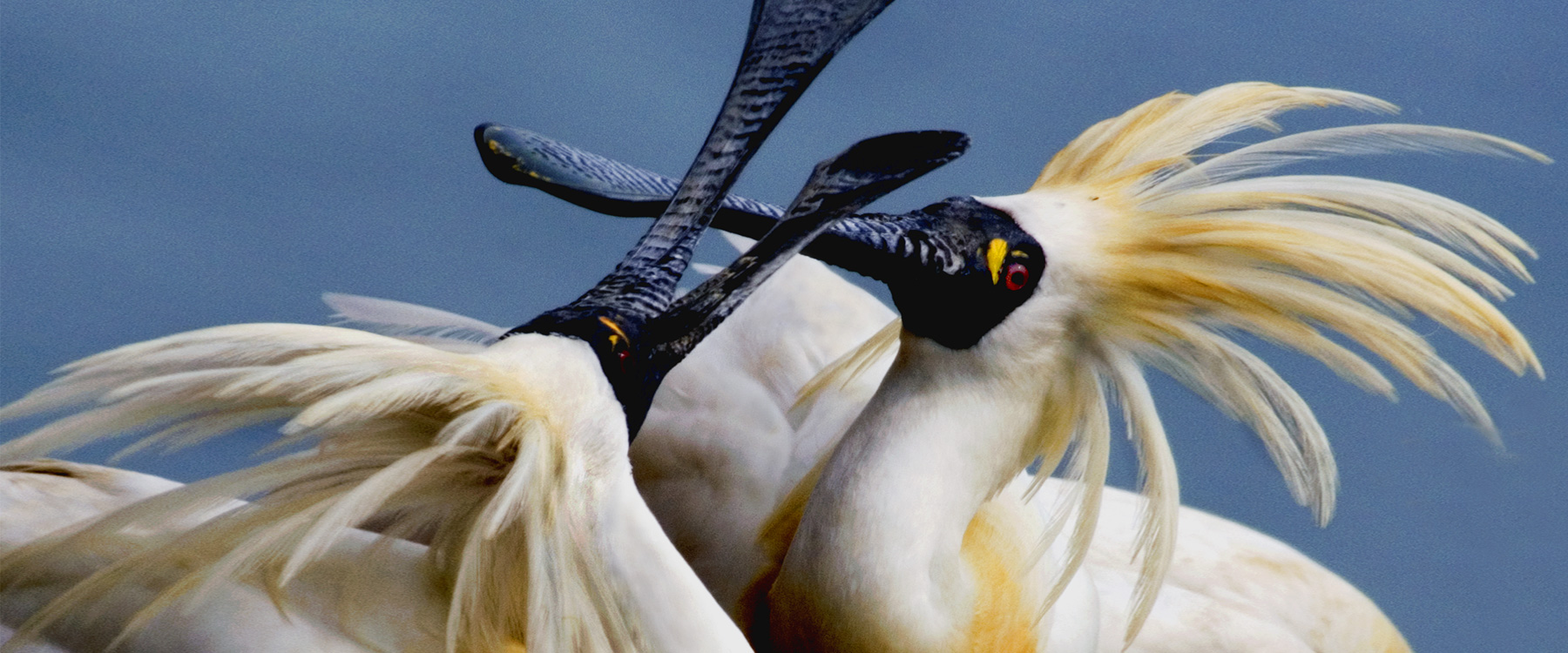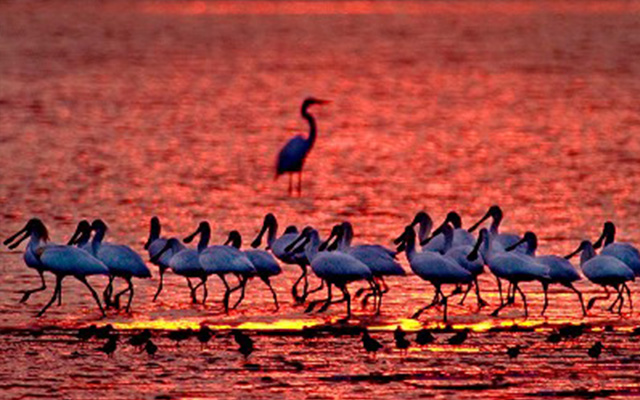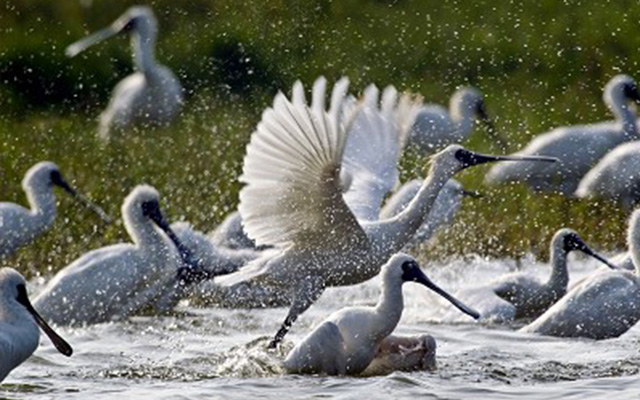Current Situation and Conservation of the Black-faced Spoonbill
The Black-faced Spoonbill (Platalea minor) is a white bird with dark red eyes and a black, flat bill that widens at the tip. The upper surface of the bill has transverse folds that increase in number as they age. The bare skin on its forehead, around the eyes, and under the chin is black as well as its legs. During the breeding season, black-faced spoonbills grow yellow ornamental feathers on their head and front chest. Younger subadult birds have a lighter bill tip and black tips on their primary feathers, and they do not grow yellow ornamental feathers during the breeding season. Juvenile birds have pink bills and brown eyes with black tips on their primary feathers. They breed in South Korea, eastern and northeastern China, and winter in southern China, Taiwan, Hong Kong, and Vietnam, among other regions. Currently, the Taijiang area in Taiwan is the wintering habitat with the largest number of black-faced spoonbills in the world.
Due to the active conservation work of scholars, bird societies, and birdwatchers from various countries, both private and government conservation efforts have improved, resulting in a rising trend in the global population of black-faced spoonbills. Thanks to the active promotion of conservationists and civilian groups, Taiwan established the "Black-faced Spoonbill Protection Area" in 2002. The Forestry Bureau of the Council of Agriculture has also promoted the "National Land Ecology Conservation Green Network Construction Plan" in recent years, which integrates public-private sector resources to promote friendly habitation, including the preservation of coastal wetland environments. Since 2003, the number of black-faced spoonbills has steadily grown each year, lowering the international conservation status of this endangered species from "critically endangered" to "endangered." In 2023, the global wintering population of black-faced spoonbills reached a historic high of 6,603, with Taiwan being the most crucial wintering location, recording 4,228 individuals. Although the increasing number of black-faced spoonbills is encouraging, they still face many threats, such as land development near their habitats, environmental pollution, the transformation of aquafarms, and global warming, which could all affect their population levels. Therefore, we must continue to pay attention to these issues in the future.
A group of passionate individuals have been making efforts to protect the habitat of the black-faced spoonbill from destruction. Director Liang Chieh-Te crossing multiple countries to film a documentary that depicts the crisis faced by the black-faced spoonbill, including environmental destruction and habitat deterioration. Wistron Foundation supports these efforts with concrete actions because the harmonious coexistence of humans and birds represents a precious value to be passed on to future generations.




 中
中


